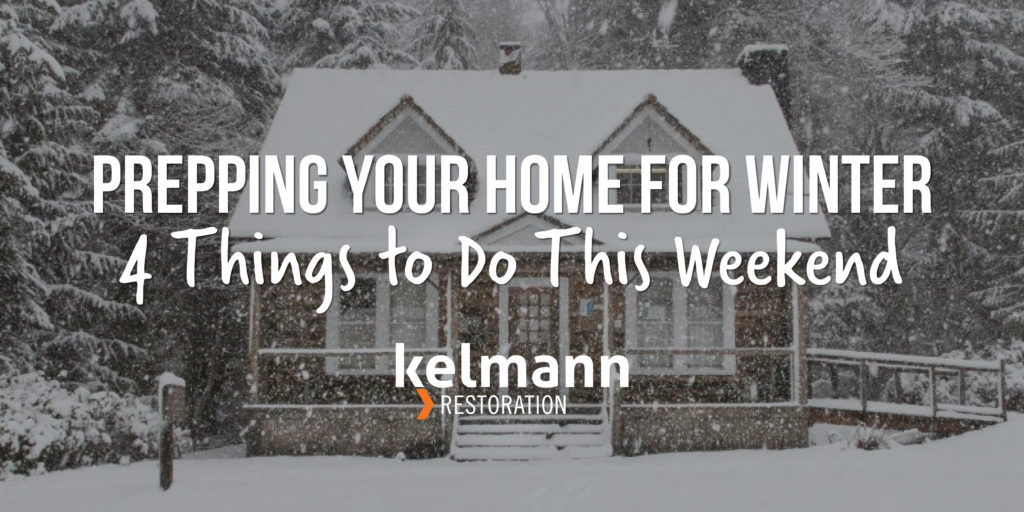Prepping Your House for Winter

Temperatures are dropping and seasonal freezes are upon us! Don’t let winter storms catch you off guard with a flooded house or hazardous yard. Follow our tips for prepping your house for winter to ensure you and your family stay safe and warm.
1. Shut Down Your Sprinkler System
The first thing you’ll want to do is turn off the water supply for your sprinklers before it freezes. Winter-proof the main shut-off valve by insulating it with pine straw or by putting a small shelter around it. If you have an automatic sprinkler system, simply turn it off or unplug the corresponding transformer. This way, it won’t accidentally be activated when in “rain-mode.”
To drain the sprinkler system, we recommend contacting a local irrigation specialist. There are a few varying methods, but due to potential safety risks, it’s best to use a professional. Once this is done, insulate any remaining above-ground valves with pine straw or insulation tape. Frozen pipes can burst and lead to leaks in your yard or basement. Properly draining and insulating them will take far less time and money than fixing a flooded basement.
2. Drain All Hoses
Shut off the water supply to your hoses and unroll them. Make sure to loosen and straighten out any bends in your hose to allow water to flow freely out. Once the water flow has stopped, disconnect the hose from the water spigot. Walk the entire length of your hose, picking it up as you go to release any remaining water. Once this is done, roll the hose in a circular shape approximately three feet wide, and store your rolled hose in a warm location. Draining and storing hoses during the winter will help them last longer and prevent future leaks.
3. Clean Your Gutters
Full gutters can lead to overflow, which then becomes a flooding hazard for your home. Start your gutter winter prep by cleaning out any leaves and debris. Trust us, you won’t want the extra weight of old leaves when it starts to snow, or the weight could cause your gutters to bend and break.
Once your gutters are clean, inspect them for holes and cracks. There are a number of sealants you can use, and this will help keep your gutters in good shape to last all winter. If you’re seeing any rotting or rust, you might want to consider replacing that section. Remember, preparatory fixes are typically more affordable than replacing your entire gutter system or repairing flood damage.
4. Test Smoke & Carbon Monoxide Detectors
Detectors should be tested every month, but especially in winter. Your home is at a higher risk for inside fires due to the increased usage of electric heaters and fireplaces. Press and hold the test buttons on your detectors, and if you hear a very loud alarm, it’s working. If the alarm is quiet or non-existent, you need to replace the batteries immediately.
Home heating systems run for longer periods of time in the winter, increasing your risk for carbon monoxide poisoning. According to the CDC, around 50,000 people go to the emergency room every year due to accidental carbon monoxide poisoning. Replace the batteries in your carbon monoxide detectors every six months, and test them every month. Be sure to also keep all vents in your home clean, as clogged vents can compromise air circulation in your home.
How Else Can You Prepare?
Winter storms in Wisconsin are no joke! Find out what else you can prepare to face the storms this season, and contact us if you’re dealing with any storm damage. The cost of winter preparation can be a lot less expensive than preventable flood damage or hospital bills. Be sure to stay safe and prepare what you can, and call a professional when possible. Remember, when disaster strikes, you can count on family. Contact Kelmann Restoration for all your property damage recovery.
